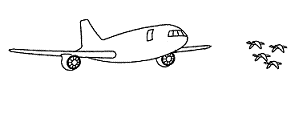Bird Strike Committee Proceedings
Date of this Version
8-8-2000
Abstract
Birds and other wildlife are a serious problem at U.S. airports. Certain species are more hazardous to aviation safety than others, most often due to the size and behavior of the species. Raptors, including hawks, vultures, and eagles, were the fourth most common bird group reported in bird strikes to the Federal Aviation Administration from 1991 - 1997, and hawks specifically were the fifth most common bird species group reported in bird strikes in Canada during the same time period. Red-tailed hawks were the fifth most common bird species reported in U.S. Air Force bird strikes from 1985 - 1999, resulting in over $12 million in damage costs. Since raptors are protected under the Migratory Bird Treaty Act, the ability to directly manage raptor populations is limited. Management of their habitat, however, is often more easily accomplished. Raptors are attracted to airport habitats that provide their basic necessities: food, water, and cover. Small mammals, such as mice and voles, are attractive prey for raptors. Reduction of small mammal populations at an airport may decrease raptor populations in the area and therefore, reduce the risk that raptors pose to aircraft. Reduction of small rodent populations can be achieved through a variety of methods, including habitat manipulation and the use of rodenticides. Habitat management can be accomplished through a grass height management regime or through the introduction of an endophyte-infected grass which may support fewer herbivores, both of which are currently being studied. Zinc phosphide, a rodenticide, was tested for efficacy at Kansas City International Airport. This presentation will discuss these options and the implications of the studies.

